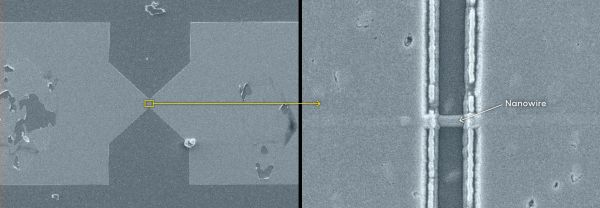The behavior of electrons and the exact fundamentals underlying the phenomenon we call ‘electricity’ are still the subject of many competing theories and heated debates. This is most apparent in the area of superconducting research, where the Fermi liquid theory — which has has formed the foundation of much of what we thought we knew about interacting fermions and by extension electrons in a metal — was found to break down in cuprates as well as in other metals which feature a state that is a non-Fermi liquid, also called a ‘strange metal phase’.
This phase was the subject of a 2023 research article by [Liyang Chen] and colleagues in Science titled Shot Noise in a Strange Metal. As summarized in a Quanta Magazine article, the term ‘shot noise’ refers hereby to the quasiparticles that are postulated by the Fermi liquid theory to form part of the electrical current as electrons interact and ‘clump’ together, creating discrete ‘particles’ that can be measured like rain drops falling on a roof. [Liyang Chen] and colleagues created a 200 nm thin nanowire (pictured, top) out of ytterbium, rhodium and silicon, followed by cooling it down to a few Kelvin and measuring the current.
What the team found was no sign of these discrete quasiparticles, but rather non-Fermi liquid continuous current. Yet what is exactly the nature of this measured current? Quite a few attempts at explaining this phenomenon have been undertaken, e.g. Jianfan Wang et al. (2022) in rare-earth intermetallic compounds. More recently [Riccardo Arpaia] and colleagues explore charge density fluctuations (CDF) as a signature of the quantum critical point (QCP), which is a point in the phase diagram where a continuous phase transition takes place at absolute zero.
They studied the CDF using X-ray scattering in cuprate superconductors with a wide doping range, using the measured CDF as an indication of the QCP, indicating that the former may be a result of the latter. With these results mostly inspiring more discussion and research, it’ll probably be a while still before we risk replacing the Fermi liquid theory, or apply strange metal findings to produce high-temperature superconductors.












